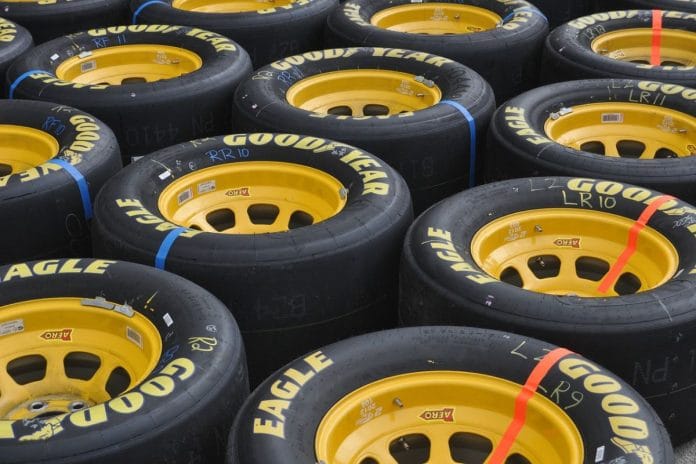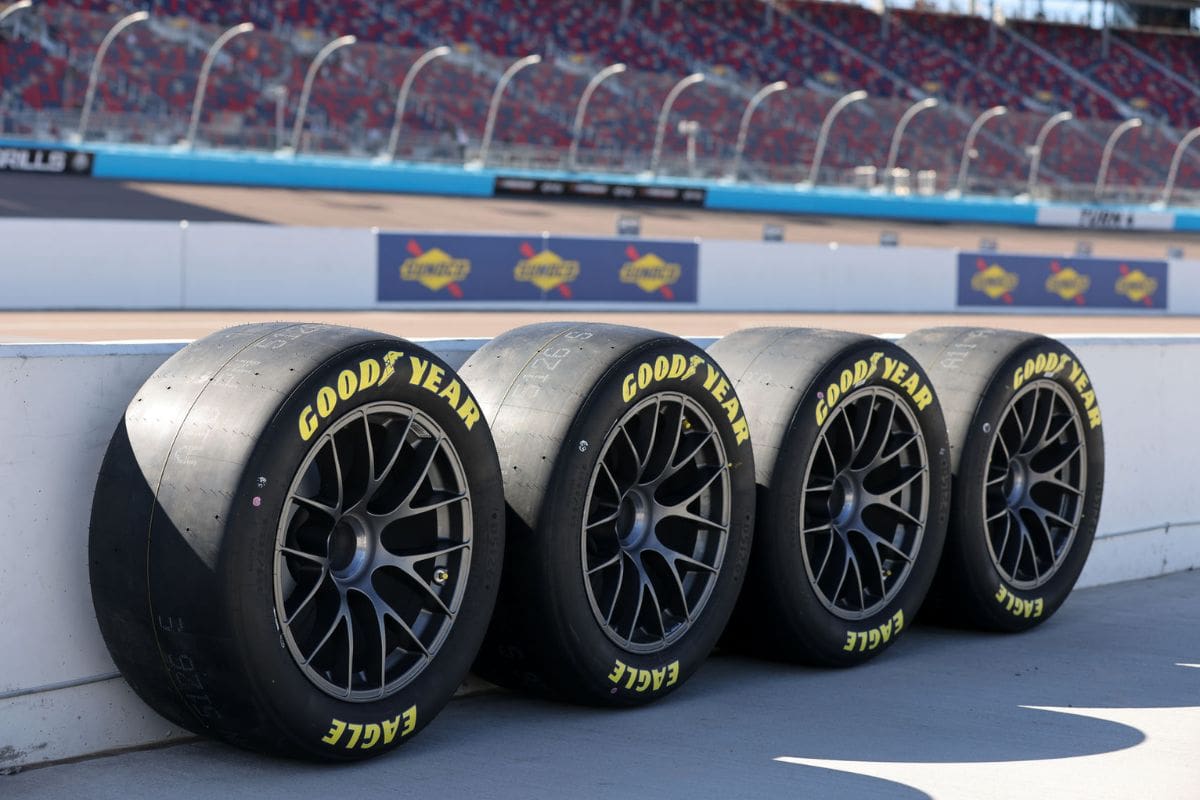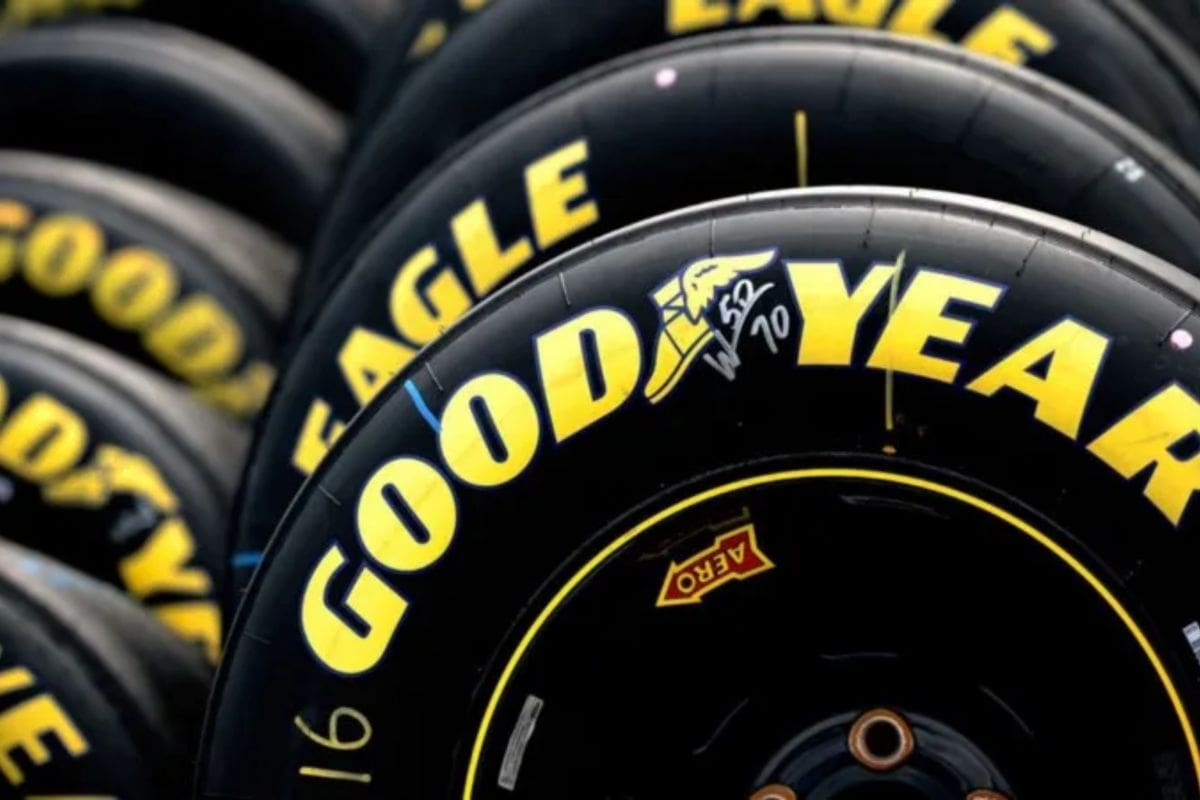NASCAR Ditches Goodyear: In a shift aimed at reducing the ongoing flat tire issue, NASCAR has ended its enduring alliance with Goodyear, choosing to investigate alternative tire providers. This choice, fueled by a pressing necessity to improve race safety and consistency, comes after a series of tire malfunctions that have compromised recent races. As NASCAR examines possible substitutes capable of withstanding the challenges of high-speed oval tracks, the consequences for driver safety and competitive interactions are significant. How will this crucial decision transform the environment of stock car racing and who will step up to meet NASCAR’s demanding requirements?
Key Takeaways
- NASCAR is considering alternatives to Goodyear due to persistent flat tire issues.
- Recent tire failures at Iowa and Bristol have heightened safety concerns.
- Fans are frustrated with Goodyear’s tire durability and manufacturing process.
- NASCAR’s lifter system is a temporary measure, not a permanent solution.
- There are concerns about the fairness and cost implications of switching tire suppliers.
Introduction and Issue Overview
The persistent issue of flat tires in the NASCAR Cup Series has prompted a substantial tactical shift, as the organization seeks an effective solution by implementing a lifter system for Cup teams. The recurring problem of tire failures reached a critical point at the Iowa race earlier this year, where five drivers—Ty Gibbs, Christopher Bell, Ross Chastain, Austin Cindric, and Tyler Reddick—experienced notable tire-related incidents. These failures ended in multiple wrecks, highlighting a serious safety concern that required immediate attention.
The nature of these tire failures is highlighted by Goodyear’s recent tire test at the same track, conducted merely a month prior to the Iowa race. Surprisingly, the test results did not predict the widespread issues that subsequently emerged. This disconnect has led to increased examination over the reliability of the tires provided and has intensified the urgency for a durable solution.
This is not an isolated incident; a similar pattern of tire blowouts was observed at the Bristol Motor Speedway earlier in the season. The frequency and severity of these tire failures have disrupted races and posed notable risks to driver safety and race integrity. As a result, NASCAR’s decision to approve the use of a lifter system marks a strategic move aimed at mitigating these risks and enhancing overall performance stability.
Necessity of the Lifter System
Given the recurring tire failures and their impact on Nascar race safety and performance, the adoption of a lifter system for Cup Series cars has become necessary. NASCAR vehicles, distinctively customized beyond their few ‘stock’ components, are engineered with extremely low ground clearance. This design lowers the center of gravity and improves cornering speed. However, this low clearance poses significant challenges when a flat tire occurs. The already minimal ground clearance is further reduced, complicating the car’s ability to navigate onto pit road.
In order to prevent cars from getting stranded when they get a flat, NASCAR will allow Cup teams to start installing a lifter system on the rear dampers next month so that the rear of the car can be raised when necessary.
The system can only by actuated by a NASCAR Official. pic.twitter.com/cVDxHEwfhp
— Bozi Tatarevic (@BoziTatarevic) July 17, 2024
The necessity of the lifter system stems from these engineering constraints. The primary function of this system is to reduce the risks and operational inefficiencies caused by flat tires. When a tire deflates, the car’s underside can scrape against the track, potentially causing further damage and increasing danger. By allowing the rear of the car to be raised via a lifter system installed on the rear dampers, the vehicle can be safely maneuvered to the pit area for necessary repairs.
“In order to prevent cars from getting stranded when they get a flat, NASCAR will allow Cup teams to start installing a lifter system on the rear dampers next month so that the rear of the car can be raised when necessary. The system can only by actuated by a NASCAR Official.”-(bozi)
Bozi Tatarevic, a NASCAR race mechanic and crew member, highlighted the importance of this innovation in a recent tweet. He noted that the system can only be actuated by a NASCAR Official. This control mechanism ensures that the lifter system is used appropriately and only in situations that necessitate its activation. The integration of the lifter system represents a proactive approach to improving race safety and maintaining competitive integrity.
Expected Impact of the Lifter System
Implementing a lifter system in Cup Series cars is anticipated to improve race continuity and safety by reducing the need for external assistance when dealing with flat tires. With this system, vehicles will be capable of autonomously making their way to pit road, thereby minimizing race disruptions and enhancing the overall flow of the event.
This advancement is particularly important as it addresses the inefficiencies and delays associated with waiting for towing vehicles, which can be time-consuming and impact race outcomes.
Furthermore, the lifter system is expected to lead to fewer Did Not Finish (DNF) incidents. By enabling quicker and more efficient tire replacements, cars can remain competitive without extended pit stops. This not only provides a fairer competition but also optimizes the participation of drivers in the race, thereby maintaining spectator interest and engagement.
From a safety perspective, the lifter system reduces the risks associated with low ground clearance caused by flat tires. When a car’s body drags due to a flat, it compromises stability and increases the likelihood of crashes, posing hazards to both the affected car and surrounding vehicles. By swiftly addressing flat tires, the lifter system helps maintain vehicular stability and reduces the potential for accidents, contributing to a safer racing environment.
However, while the lifter system offers a short-term solution, it does not address the underlying issue of tire durability. To achieve long-term improvements, NASCAR must question tire reliability and hold manufacturers like Goodyear accountable.
Fan Reactions and Feedback
While the introduction of the lifter system has sparked varied reactions among fans, many are expressing concerns that it merely addresses the symptoms rather than the root cause of the flat tire issue. The recurring flat tire problem, evidenced in races at Iowa and Bristol, highlights a critical need for a solution that goes beyond temporary fixes.
Fans have been vocal on social media, with opinions flooding platforms like X (formerly known as Twitter). One fan captured the sentiment by stating, ‘NASCAR is putting band-aids on symptoms instead of treating the disease.’ This statement reflects a broader frustration with NASCAR’s approach, suggesting that the true resolution lies in addressing the tire manufacturing process itself. The perception among many is that Goodyear’s role in the issue has not been adequately scrutinized, and that the lifter system is a stopgap measure rather than a definitive solution.
Additionally, there are concerns about potential exploitation of the lifter system by teams to gain on-track advantages. Given NASCAR’s competitive environment, where marginal gains can be crucial , it is not far-fetched to anticipate that teams might innovate ways to utilize the lifter system for performance benefits. One fan commented, ‘Interesting. You KNOW teams are going to find a way to exploit this piece. Somehow, someone will figure out something to gain an advantage… and I’m all for it. I love the ‘innovations’ teams come up with.‘
Further Concerns and Potential Solutions
Addressing the broader implications of the lifter system, several fans have raised valid concerns about the added expenses and potential weight impacts on NASCAR’s Cup Series cars. One fan remarked on social media that the lifter system, while advanced, may be an excessively intricate and pricey solution to a relatively simple problem. The suggestion was made to instead equip safety trucks with jacks, electric impacts, and specially marked wheels and tires to facilitate quicker returns to pit road, thereby minimizing extra costs.
“Interesting. You KNOW teams are going to find a way to exploit this piece. Somehow, someone will figure out something to gain an advantage… and I’m all for it. I love the “innovations” team come up with.”
“Or. Here me out. This is crazy. Have the safety trucks equipped with a jack, an electric impact, and specially marked wheels and tires to get back to pit road. I dunno. Seems silly to put $2k or more in silly actuators when everyone is already bitching about costs.”
-(fans)
A notable concern among fans is the potential increase in vehicle weight due to the lifter system. With teams constantly aiming to reduce car weight for enhanced speed, the inclusion of such a system could require significant adjustments in car setup and compliance with technological regulations. This has raised questions about the potential impact on car performance and the overall fairness of the competition.
One fan humorously noted that the lifter system could unintentionally pave the way for active suspension, further complicating the competition landscape. As NASCAR continues to search for solutions to the flat tire dilemma, it is essential to balance innovation with practicality, ensuring that the proposed systems are both cost-effective and conducive to high-performance racing. Fans and teams alike will be closely monitoring how these changes unfold and impact the sport.
News in Brief: NASCAR Ditches Goodyear
In addressing the recurring flat tire problem, NASCAR’s decision to part ways with Goodyear emphasizes the organization’s dedication to improving safety and competitiveness in the sport.
By investigating other tire suppliers, NASCAR aims to reduce the dangers linked to tire failures and enhance race continuity.
This calculated move emphasizes the need for ongoing innovation and adjustment in high-speed racing, guaranteeing a top-notch experience for drivers, teams, and fans.
Further progress will determine the effectiveness of this noteworthy shift.
ALSO READ: Dale Jr.’s Take on NASCAR and Goodyear’s Game-Changing Debut at Richmond





